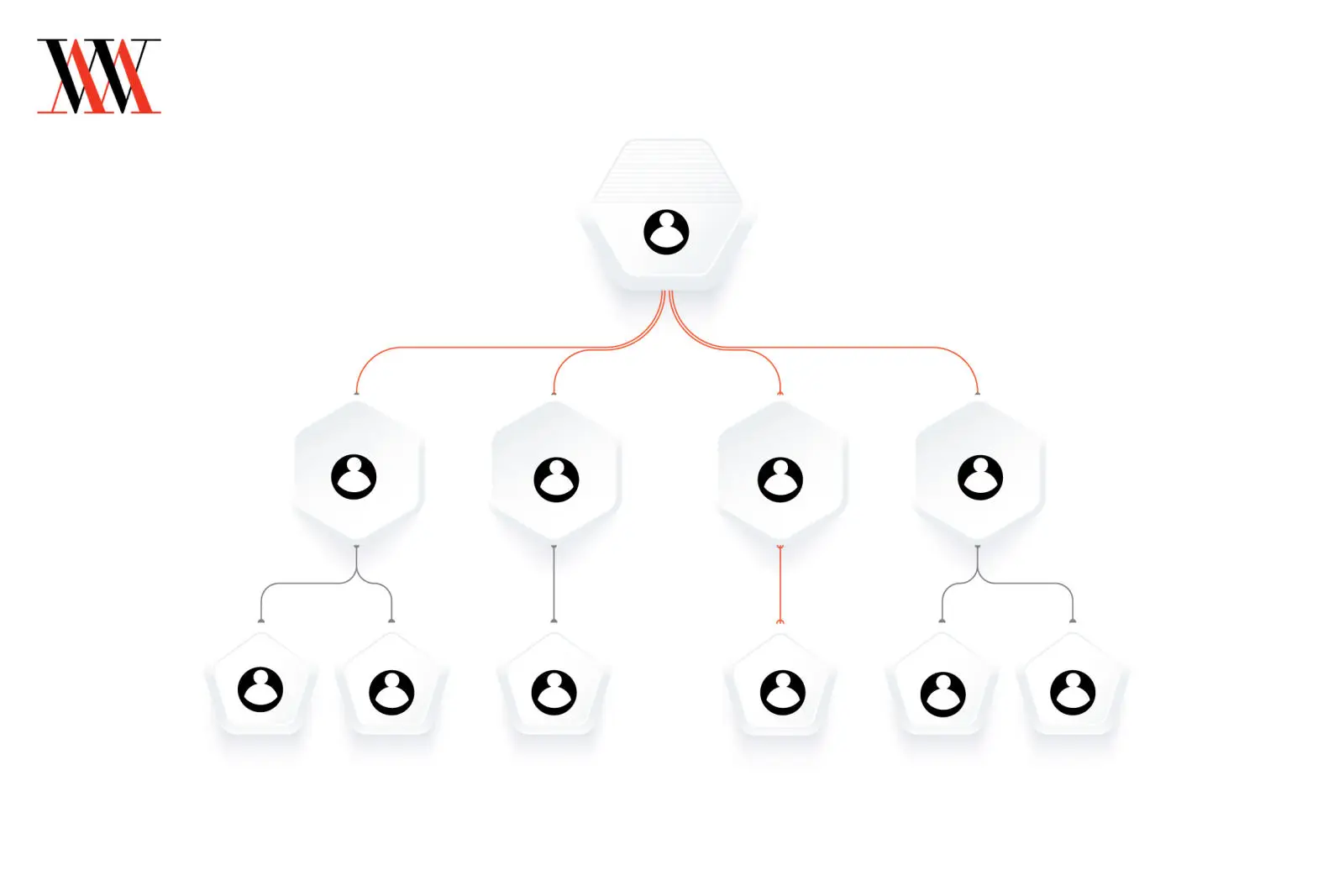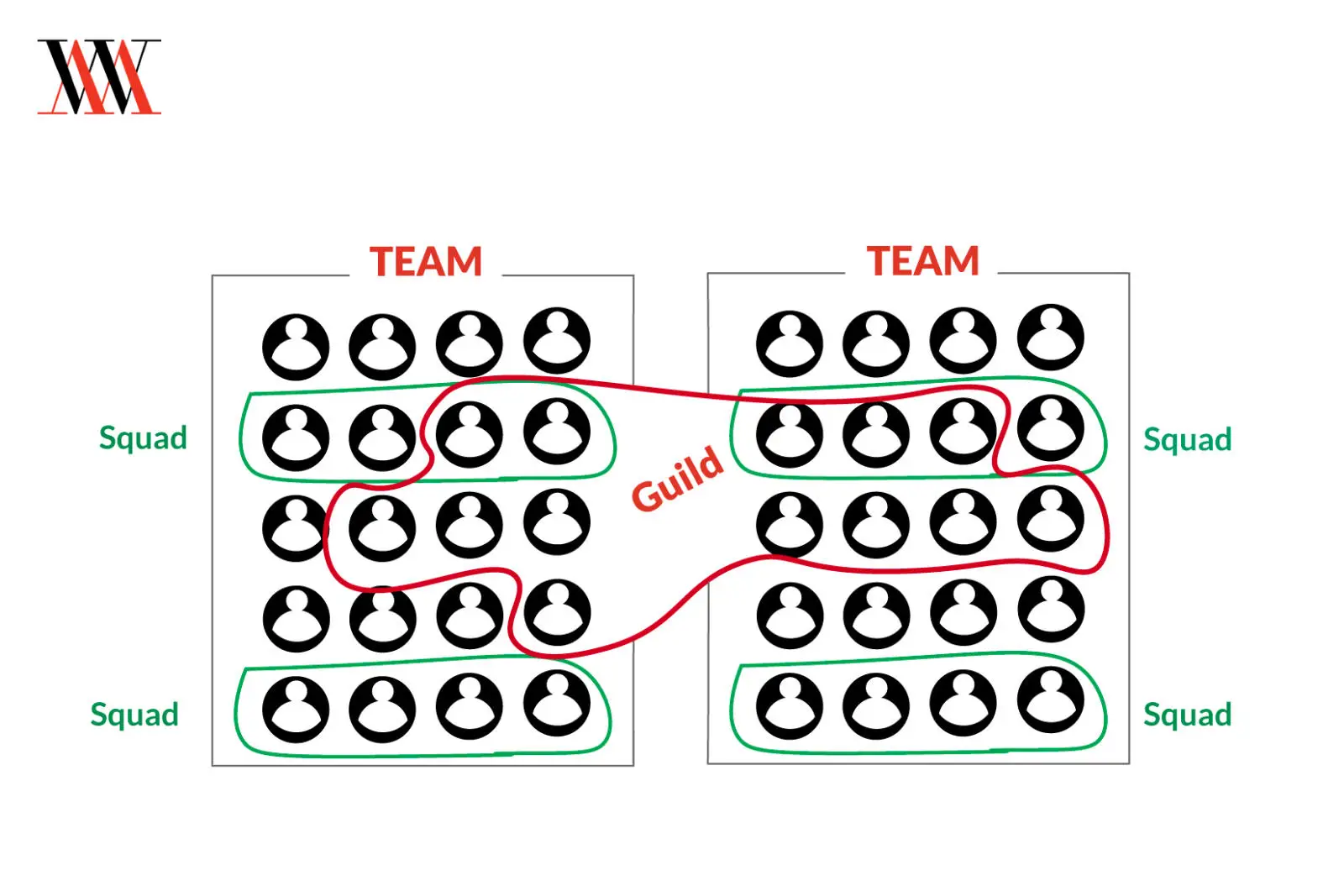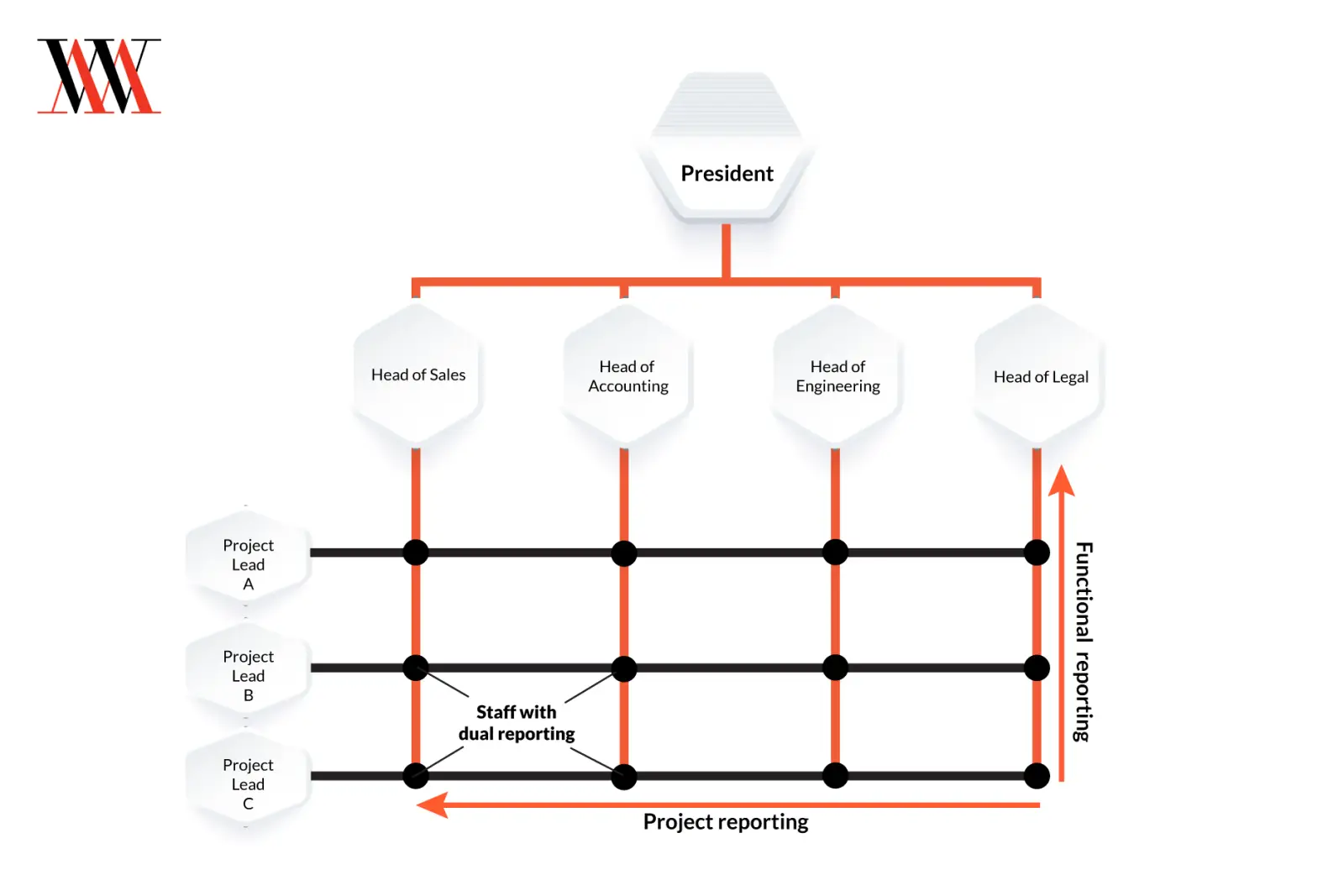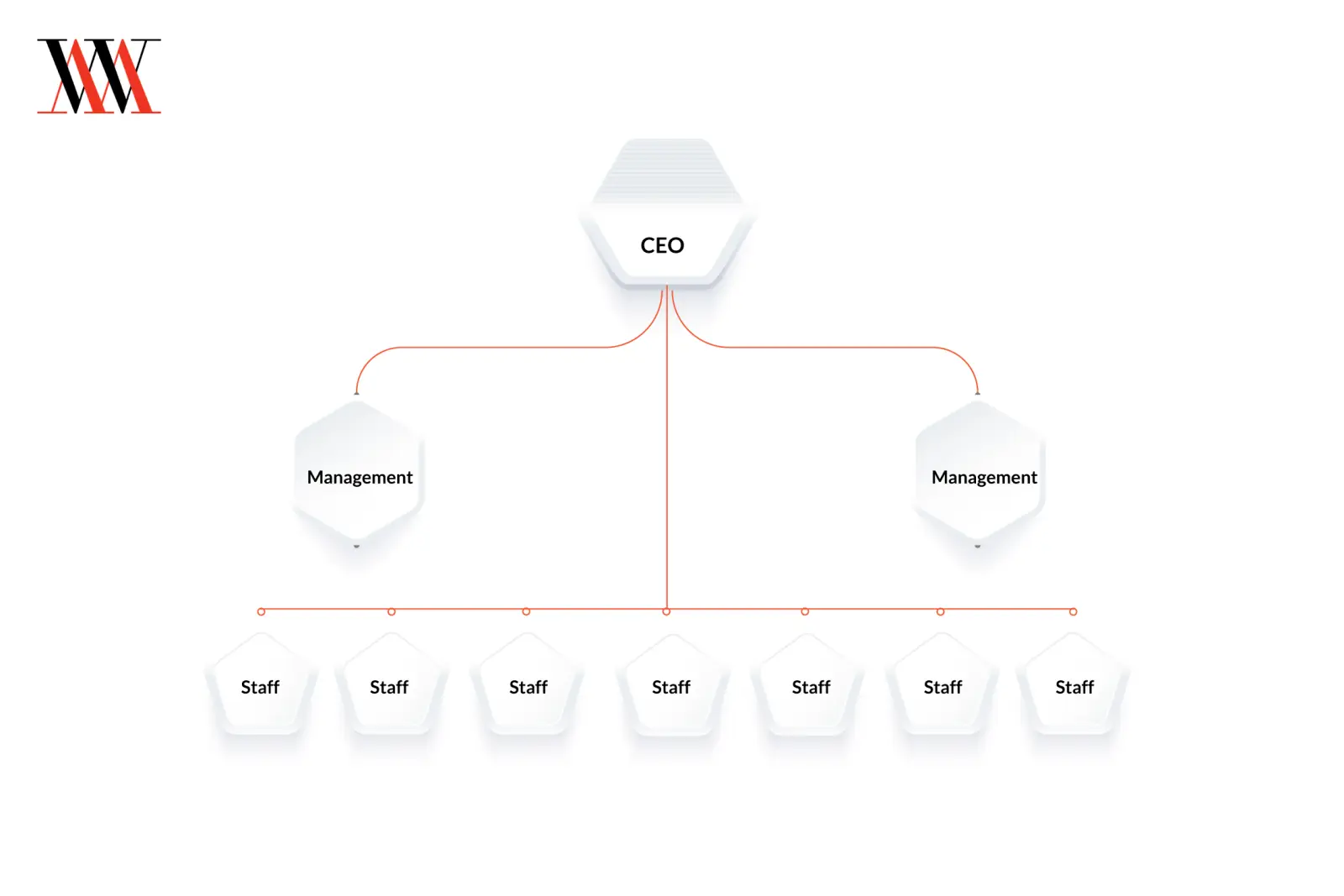Summary
Most organizational structures fall into one of four categories. In this post, we’re covering the four types and how OKRs can complement and enhance them.
The way a company is structured reflects how it sees decisions being made. An organizational structure can reveal a lot about an organization (e.g., how much resource it puts into one area or another, what functions are contained within a vertical vs. cross-functional team, etc.). Most organizations fall into one of four categories. Each type of org structure facilitates different workflows and decision-making processes. But that’s just on paper. Regardless of the organizational style, Objectives and Key Results (OKRs) can help orient your teams towards action. Ultimately, all those boxes or circles need to be working towards shared overarching goals.
Read on to dig into the four types of organizational structures and how OKRs can complement them with the right goal-setting framework.
What is Organizational Structure?
Organizational structure is the scaffold for how work is both divvied up and how it flows through an organization. When you have a clear org structure, people know who’s responsible for specific work — and how that work gets disseminated, reviewed, and delivered. Without a clear org structure, you could end up with duplicate work, unnecessary backlogs, and confusion that can cost time and money.
Organizational structure doesn’t have to be complicated, and even the smallest organization can benefit from putting a formal structure in place. Chances are you have one, even if you’ve never officially put it down on paper. As your organization changes and grows, the structure can evolve. However, it’s important for your future to be aware of how you’re organized now.
What are the Benefits of Organizational Structures?
There are many different organizational structures. Before you choose one, you need to understand how it can help:
- Clarify decision making
- Define organizational capabilities
- Provide clarity around chain of command
- Cultivate relationships/collaborations
- Influence workflow and information flow
- Spot inefficiencies
- Increase opportunities to grow and/or better align
- Show paths for career growth
- Affect how authority is distributed through the organization
What Are the Four Most Common Types of Organizational Structures?
Here, we’re going to summarize four popular organizational structures and the advantages and disadvantages of each.
Hierarchical

Most organizations fall into a basic pyramid hierarchy: leadership on top and the people that report to them underneath. The number of layers depends on the size of the organization and the number of departments.
Pros:
- Straightforward and clear
- Easily allows for growth
Cons:
- Can get unwieldy with too many layers
- Can require effort to break silos
Team-Based

Exactly like it sounds, a team-based structure puts more emphasis on teams than individual leadership roles. One example of a team-based structure is the Spotify model, which can include overlapping groups across divisions and functions. They’re formed based on projects or long-term collaborations. And while the names vary from squads to guilds, the core tenet of team-based org structure is agility.
Pros:
- Increases collaboration and teamwork
- Teams feel like mini-startups
- Encourages experimentation
Cons:
- Highly decentralized, so alignment can be tougher to navigate
- Every time a new team forms, they have to learn to work together again
Matrix

Sadly, neither Neo nor the blue and red pills make an appearance in this organizational structure. With a matrix structure, remove typical top-down hierarchy and replace it with a network where people can report to multiple managers. Most often it’s just two managers, typically the functional leader and the person overseeing a particular project. Employees in this scenario often get to work with more colleagues from varying departments and tap into more skills than in other structures.
Pros:
- Can help promote resource and responsibility sharing
- Opportunity to increase skill set and work on varying projects
Cons:
- Can promote confusion around reporting structure
- Performance reviews are more complex
Flat

Our last common org structure is flat. While flat orgs still have some hierarchy, it’s most often limited to one or two levels deep, such as only one managerial layer between the CEO and all the other staff. More typical in companies with small teams, it’s also used in larger organizations that want to limit the “middle manager” challenge.
Pros:
- Can foster improved communication and higher morale
- More cost effective
Cons:
- Increased chance for employee confusion; without defined roles, power struggles can ensue
Choosing the Right Organizational Structure
Of course the biggest consideration around organizational structure is deciding which is best for your needs. As we mentioned above, some work better for small teams and others for larger, but at the end of the day, your structure is only as good as its implementation. That’s where OKRs can come in.
How OKRs can Help any Organizational Structure
No matter how teams are structured, strategy is executed by the entire organization. OKRs are an expression of strategy, helping teams focus, prioritize and align work through the whole organization. Because OKRs are succinct, memorable, and actionable, they guide teams to make day-to-day decisions towards achieving topline strategies.
Examples of OKRs in Different Organizational Structures
Here are four examples of how OKRs can mirror or complement your org structure:
- OKRs at a Hierarchical Org
Allbirds has 250 employees. And while not a large organization, they’ve used OKRs to create a tight link between their ambitious mission to become the most sustainable footwear on the planet, and their overall need for financial gain. At Allbirds, OKRs are set at the executive level, with one layer of OKRs aligning to top line goals. Although teams have less autonomy than a looser team-based structure, tightly hierarchical OKRs help everyone at Allbirds focus efforts on a few big priorities. - OKRs at a Team-Based org
TravelPerk’s founder implemented the OKR framework as an effective way to coordinate the company around a specific focus. To maximize flexibility, teams form around work (i.e., a specific project) rather than traditional department-level functions. The company sets its overall vision for the beginning of the year, and then each department sets OKRs based on the company’s annual goals. As departments create plans to achieve the goals, new work teams emerge, each of whom sets their own OKRs. - OKRs at a Matrix org
Intuit is an example of a matrix OKR model. In the book Measure What Matters, founder Scott Cook describes helping employees avoid the temptation to link their goals solely to their managers, and their manager’s managers, and so on. Instead, he encouraged teams to look for links between OKRs horizontally across the organization. Teams that might have otherwise worked independently found connections and synergies that helped them work coherently across silos. - OKRs at a Flat Org
Flat organizations are designed to maximize autonomy. But as Alexis
Gonzales-Black of management consulting firm August Public notes, “In a self-managed organization, there’s the possibility of going in different directions.” At August there are no managers; but OKRs empower teams to make independent decisions, knowing that they align to common overarching goals. Teams stay aligned with regular check-ins.
Conclusion
Ultimately all organizational structures exist to help translate strategy into execution. Make the most of your org structure by complementing it with the right goal-setting framework. No matter the organizational structure, OKRs can help turn mission and vision into action, keep employees engaged and focused on what matters most.
Learn more about the power of the OKR goal setting framework, take our free OKRs 101 course, or sign up for our Audacious newsletter.
